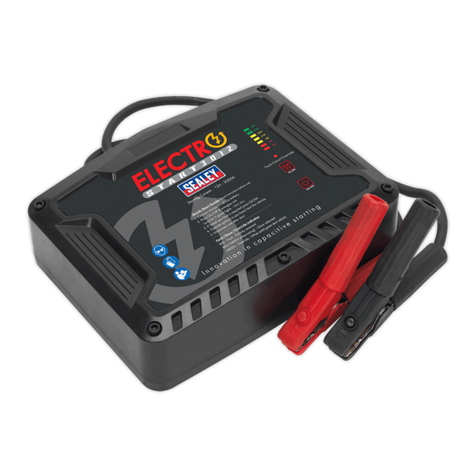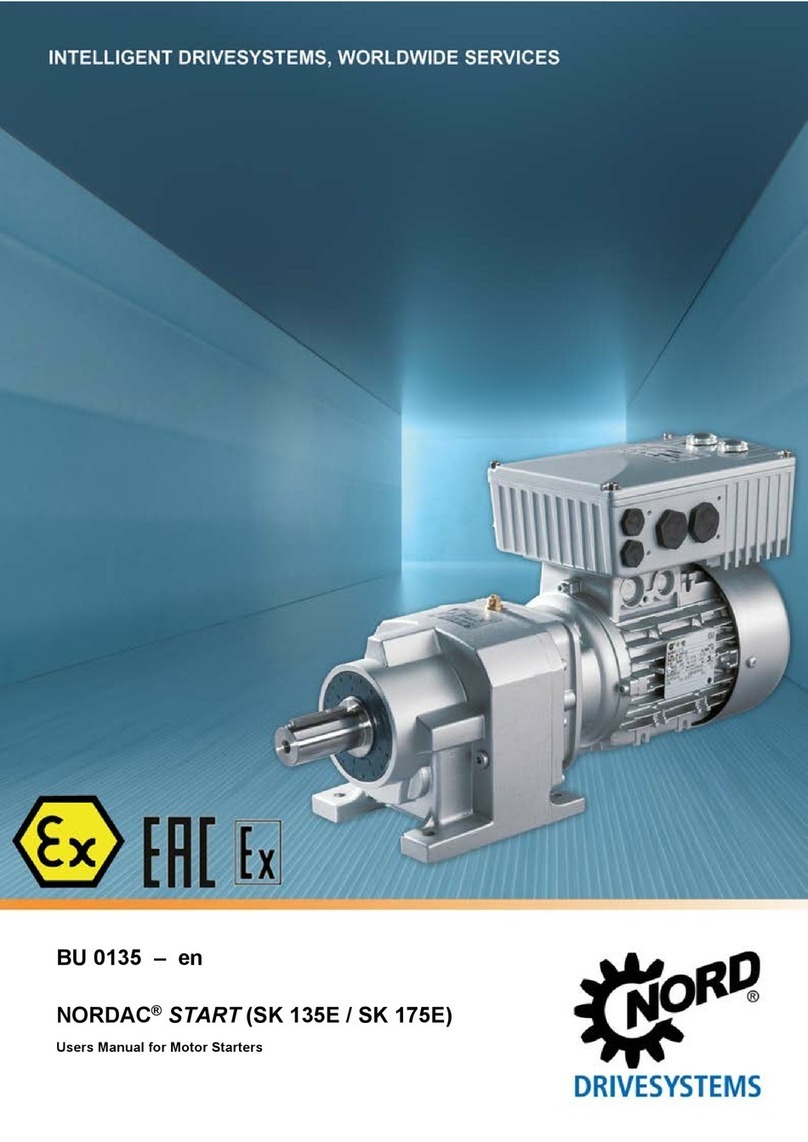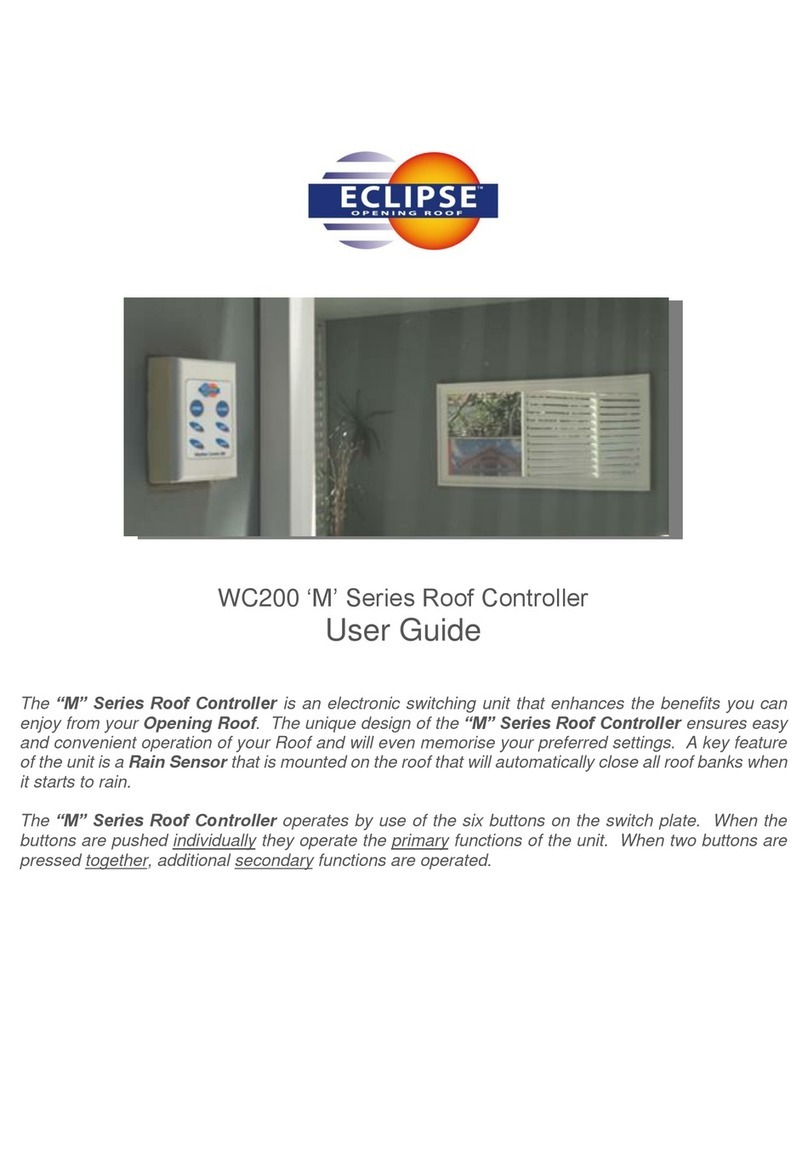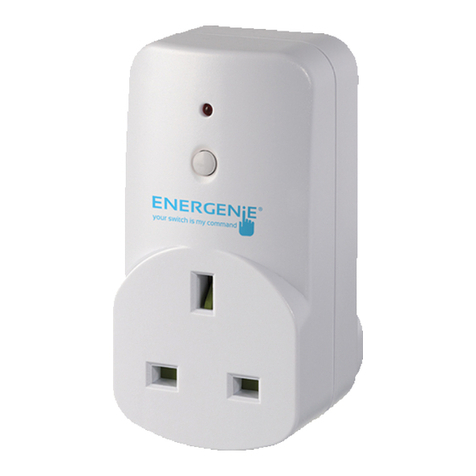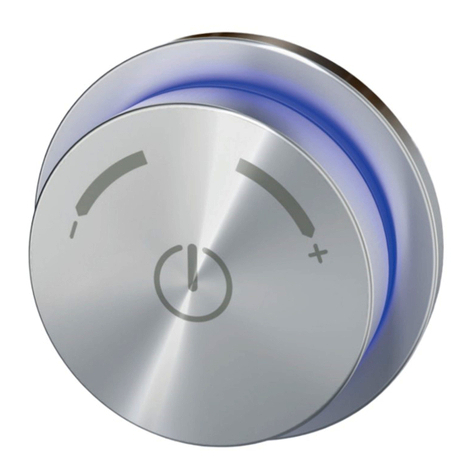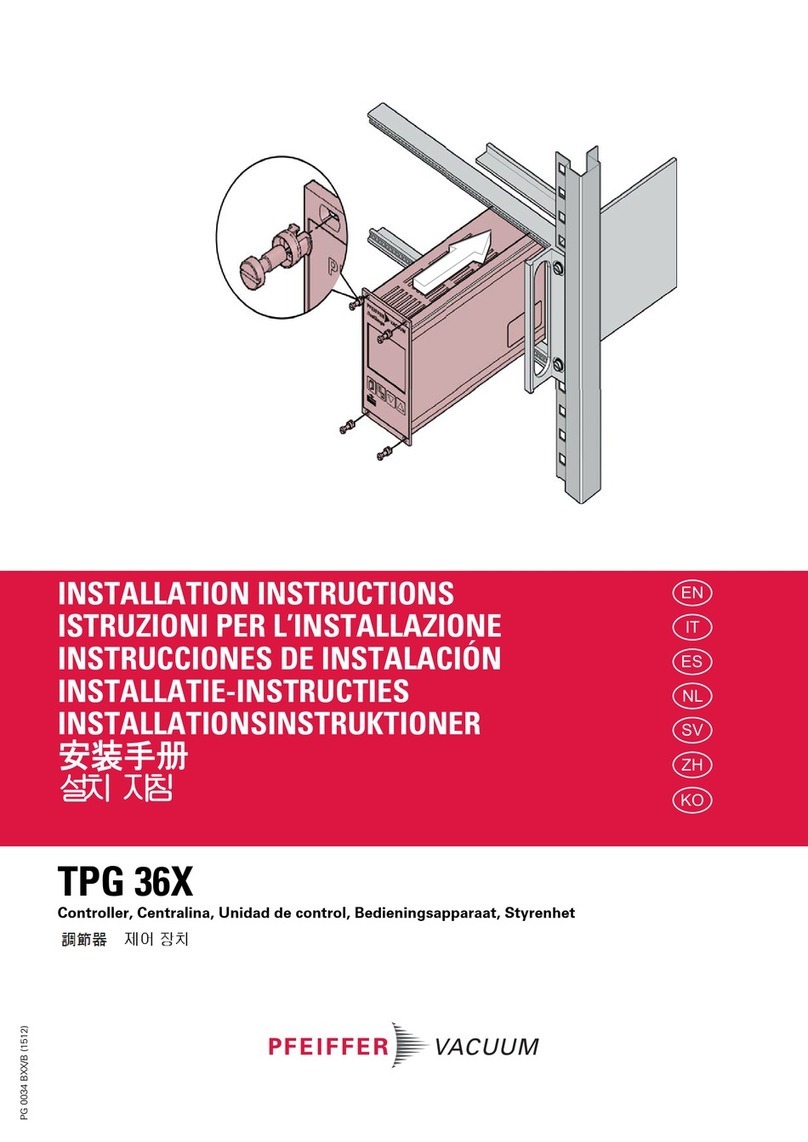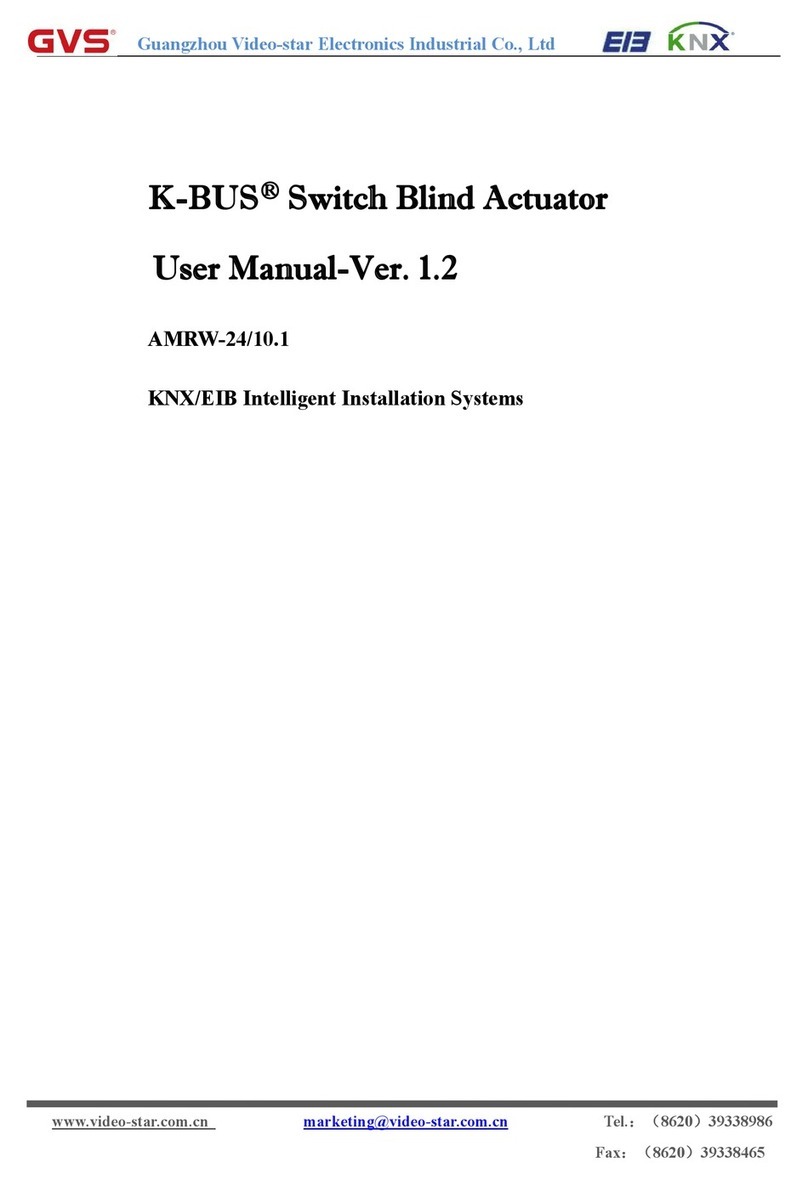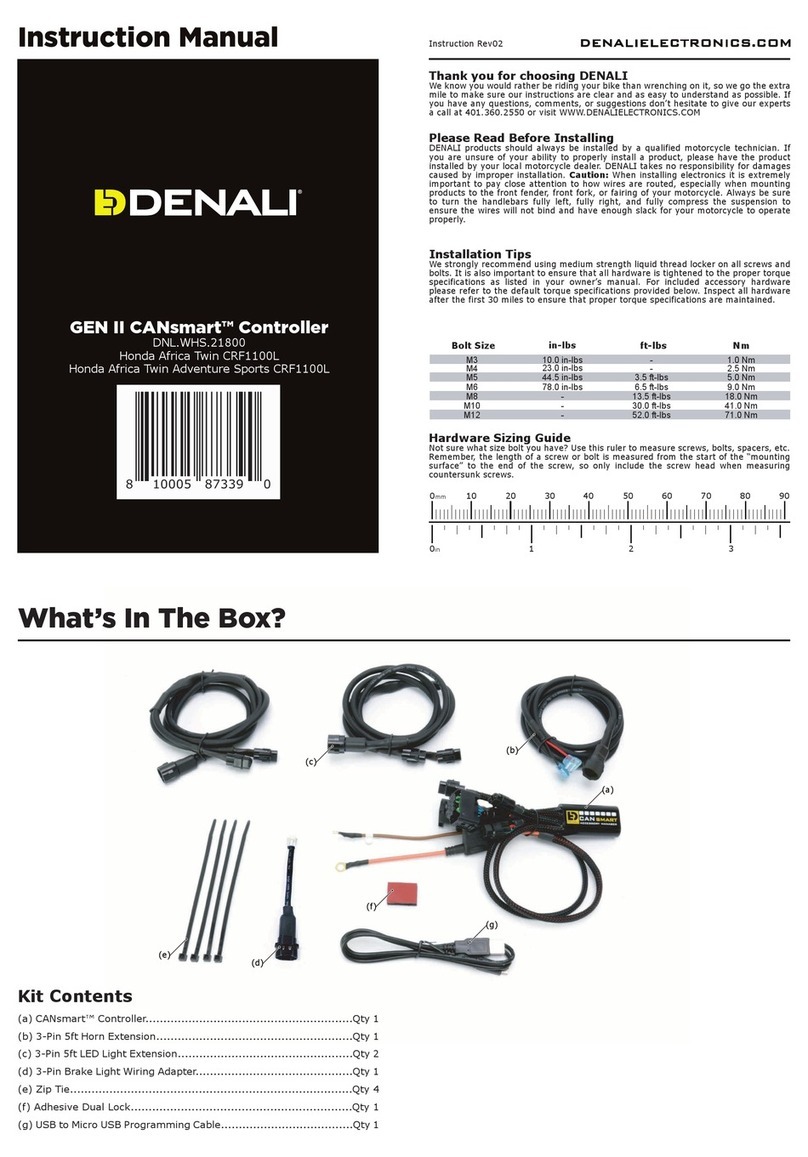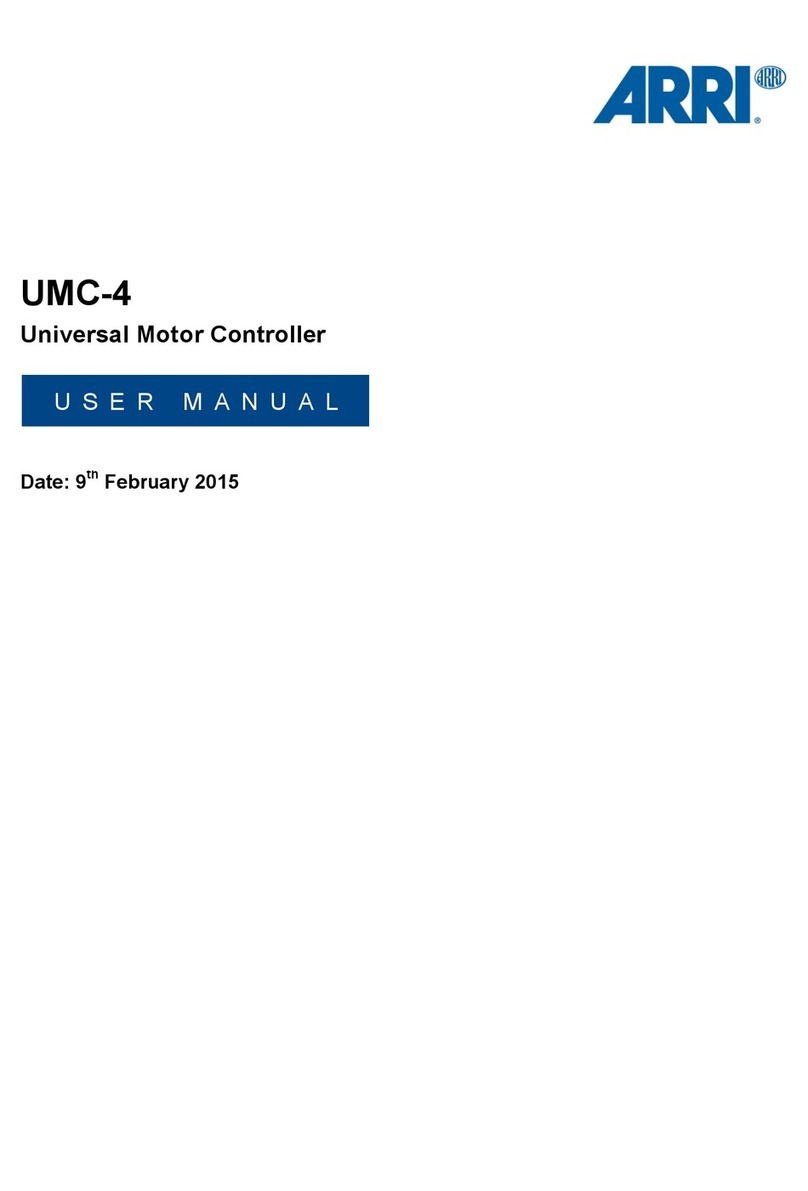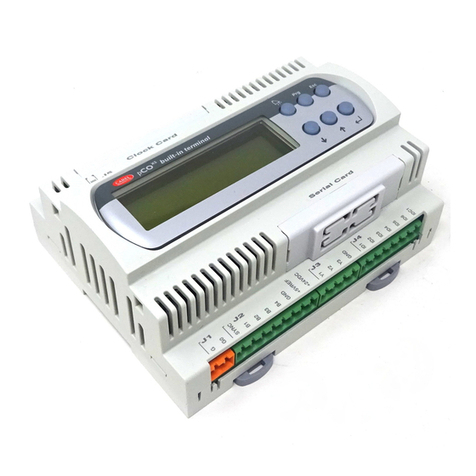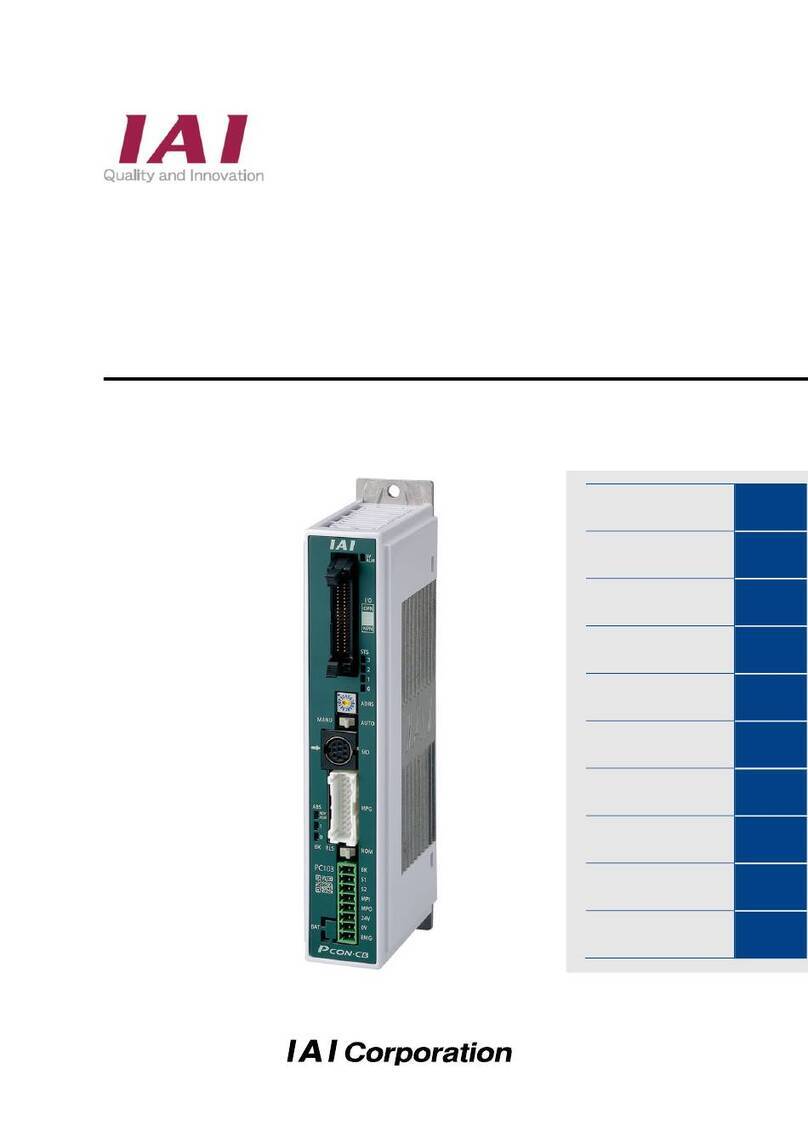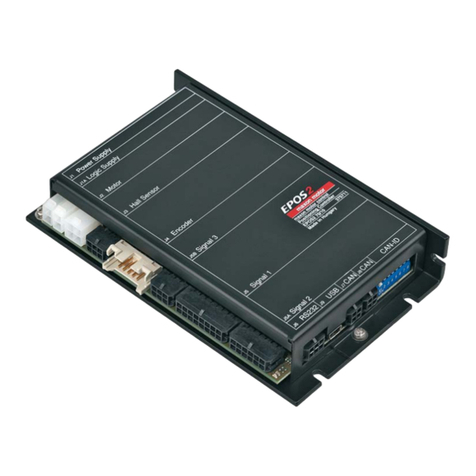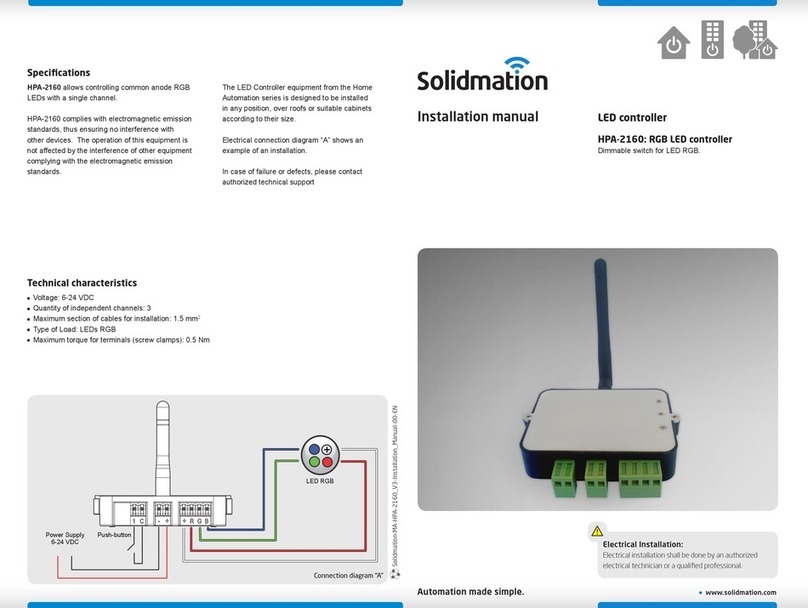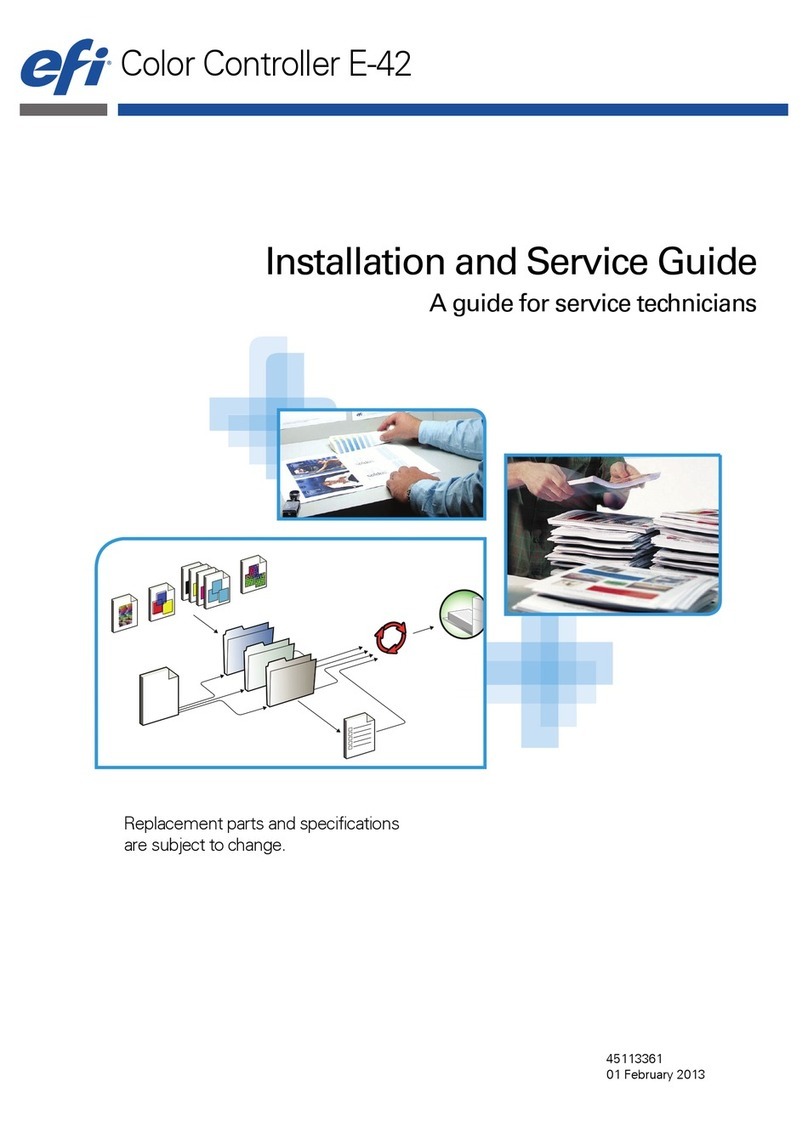Nex Monterey User manual

NEX® Regulator Owner’s Manual
Doc. No.: 3.0 - 2020
Sand City, CA 93955
COPYRIGHT NOTICE
© 2020 NEX® Underwater Products 2020. All rights reserved. This Owner’s
Guide may not, in whole or part, be copied, photocopied, reproduced, translated,
or reduced to any electronic medium or machine-readable form without prior
consent in writing from NEX® Underwater Products.
Regulator Owner’s Guide!rev. 2020/02
2

Warnings & Cautions
Read manual carefully.
Accidents may occur if instructions are not followed.
Use of regulators is intended for experienced divers only. If you are unaware of
how to use a regulator please contact us before diving.
Never modify equipment. Regulators are assembled by our experienced
technicians. If you suspect something is wrong with your regulator contact us.
Regulators should only be used per the instructions in this manual.
Before every dive check your regulator for damage.
If you are planning to dive depths outside of recreational limits (130ft), please let
us know as their are some changes that need to be made on the regulator
3

Table Of Contents
1. Introduction 5
2. Precautions & Warnings 6
2.i Oxygen enriched gases 7
3. Regulator first stage 7
3.i Attaching regulator to tank 8
3.ii Removal of regulator from tank 10
4. Regulator Second Stage 11
4.i Venturi Lever 11
4.ii Sensitivity Adjusting Knob 12
4.iii Clean or Change the Cover Ring or the Purge Cover 13
5. Alternate Air Source (Octopus) 13
6. User Care and Maintenance 15
7. Before Diving 15
7.i Pre-Dive Checklist 15
7.ii Pre-Dive Inspection 15
8. During the Dive 16
9. Anti-Freeze Protection 17
10. Service and Repairs 17
11. Warranty and Limitation of Liability 18
12. Contact Info 20
4

1. Introduction
Congratulations on your new regulator and thank you for choosing NEX®.
Your new regulator has been designed and manufactured under the most stringent
standards for quality and performance.
This manual covers the features and operations of the Monterey regulator model. This
manual is not intended for use with any other regulator manual.
By following the instructions in this guide, you will understand: how your regulator
works, how to make best use of its features, and how to maintain it for long term use.
DO NOT dive with your regulator until you understand all of the information provided in
this manual.
5

2. Precautions & Warnings
-
Before using this regulator, you must have successfully received training and
certification in SCUBA diving from a recognized certification agency. WE ARE NOT
RESPONSIBLE FOR UNAUTHORIZED USE.
-
The use of SCUBA equipment by an uncertified, or untrained person, is dangerous and
can result in serious INJURY or DEATH.
-
Regulators should NOT be used by untrained persons who may not have knowledge of
the potential risk and hazards of scuba diving.
-
Improper use or misuse of this product can cause serious INJURY or DEATH.
-
This regulator is NOT configured for commercial use with surface supplied air.
-
This regulator MUST be used together with a Submersible Pressure Gauge (SPG) that
measures and indicates the user’s air supply pressure.
-
Always pressurize the regulator gradually by opening the cylinder valve SLOWLY.
-
DO NOT apply any type of aerosol spray to the regulator. Doing so may cause
permanent damage to certain plastic components, including the regulator second stage
housing.
-
DO NOT leave a cylinder standing unsecured with the regulator attached to the valve.
Doing so may cause permanent damage to the regulator and cylinder valve if the
cylinder falls.
-
DO NOT use the regulator first stage as a carrying handle when lifting or transporting
the cylinder. Always carry the cylinder by the cylinder valve or an attached carrying
device.
-
If you DO NOT fully understand how to use this regulator, or if you have questions, seek
instruction on the regulator’s use from your authorized NEX® dealer before you use this
product.
-
Prior to each dive, inspect and test your regulator for proper operation. If any part of it
does not function properly, DO NOT USE!
-
When diving in cold-water (below 50℉or 10°C), you MUST have received training and
a certification in the techniques of cold-water diving from a recognized training agency.
-
6

Any equipment marked with the greater than 50º F symbol (>50°F is ONLY suitable for
water temperatures above 50°F or 10°C.
-
When configuring your regulator for use with emergency auxiliary breathing systems
(octopus), proper selection of certified equipment is required.
2.i Oxygen enriched gases
This section of your owner’s manual contains important information regarding the use of
your equipment with oxygen enriched gases, (i.e. Nitrox, Trimix, Heliux, and Oxygen).
This regulator is not intended to be used with any mixture of gases containing more
than 40% oxygen. Use of this regulator with mixtures containing more than 40% oxygen
can cause serious INJURY or DEATH.
When the breathing mixture contains oxygen content greater than 22%, the user must
have received certification in diving with Enriched Air from a recognized training agency.
You also must make sure the regulator has been cleaned for Enriched Air (Nitrox)
according to EN 13949 Standards.
This regulator is NOT a medical device. This regulator is NOT intended for and must
NOT be used to supply treatment oxygen in a medical emergency.
When using air with this regulator, the air used must meet EN12021 Annex A standards
and comply with EN250:2014 standards.
Per EN 250, SCUBA shall be equipped with at least the following sub-
assemblies:
1. Air cylinder(s) with cylinder valve(s) and carrying frame.
2. Demand regulator (first and second stage).
3. Safety device / pressure gauge.
4. Carrying systems / body harness.
5. Face piece: Mouthpiece assembly or full-face mask or diving helmet.
3. Regulator first stage
The first stage converts the tank’s high-pressure air to an intermediate pressure (IP) of
135~145 psi that can be handled by the second stage regulator to deliver a smooth flow
of air when you inhale with the second stage in your mouth.
7

3.i Attaching regulator to tank
Yoke style - Maximum working pressure 3500 psi / 232 BAR.
DIN style - Maximum working pressure 4500 psi / 300 BAR.
Before attaching the regulator to the tank, SLOWLY open, and close the tank valve to
allow a momentary flow of gas to blow any moisture or contaminants from the opening
in the tank valve.
Alternatively, you can use a clean cloth to clean any moisture from the tank valve. DO
NOT USE CHEMICALS ON THE VALVE.
For Yoke Style
1. Remove the dust protector from the yoke by turning the easy-grip knob in a counter-
clockwise direction.
2. Place the yoke connector over the tank valve, positioning the yoke with the seating
surface against the valve O-ring.
3. Turn the easy-grip yoke knob clockwise until secure. DO NOT over-tighten.
4. SLOWLY open the tank valve (with the pressure gauge facing away from you).
5. Momentarily purge the second stage and listen to ensure that no gas is leaking from
the regulator or valve connection.
6. If any leakage is observed, inspect the O-ring. Replace if damaged or if the yoke
does not seal properly.
**If gas still leaks, DO NOT USE. Take the regulator and SCUBA cylinder to an NEX®
authorized supplier or dealer for inspection and service.
8
For Yoke Style
Ensure that the O-ring located on
the tank valve is not damaged or
deteriorated. Replace the O-ring if
it is damaged with a proper
replacement.
For DIN Style
Examine the threads in the valve to ensure they are
clean and free of burrs or defects that could damage
the threads of your regulator’s DIN fitting. Ensure
that the O-ring located on the tank valve is not
damaged or deteriorated. Replace the O-Ring if it is
damaged, with a proper replacement.

For DIN Style
1. Remove the protector cap from the threads of the regulator DIN connector wheel,
and examine the threads and O-ring. Replace the O-ring by a certified NEX®
supplier if it becomes damaged.
2. Be sure not to cross - thread.
3. Thread the DIN connector wheel clockwise onto the tank valve opening until it is
secure.
4. Slowly open the tank valve (with the pressure gauge facing away from you).
5. Momentarily purge the second stage and then listen to ensure that no gas is leaking
from the regulator or valve connection.
6. If any leakage is observed, inspect the O-ring. Replace if damaged or if the O-
ring does not seal properly.
**If gas still leaks, DO NOT USE. Take the regulator and SCUBA cylinder to your local
NEX® supplier and dealer for inspection and service.
9

3.ii Removal of regulator from tank
For Yoke Style
1. Close the tank valve and purge all gas from the regulator system by pressing the
purge button on the second stage regulator.
2. Ensure that all pressure has been purged.
3. Turn the easy-grip yoke knob counterclockwise to loosen and lift the first stage off
the tank valve.
4. Prevent water from entering the first stage.
5. DO NOT blow air near a first stage that does not have the dust protector in place.
6. Dry the dust protector, position it within the yoke, and secure it by tightening the
yoke knob.
For DIN Style
1. Turn the DIN connector wheel counterclockwise to remove from the tank valve.
2. Prevent water from entering the first stage.
3. DO NOT blow air near a first stage that does not have the dust protector in place.
4. Place the protector cap on the threads of the regulator DIN connector wheel.
10

4. Regulator Second Stage
The second stage of the regulator assembly receives air at an intermediate pressure of
approximately 135~145 psi from the first stage. The second stage delivers the air to you
at ambient pressure when you inhale.
When you stop inhaling, the second stage regulator shuts off the flow of air and
provides a path for exhaled air.
All second stage regulators have a level of sensitivity that can result in excess air being
expelled in the water when the second stage is not in your mouth. This can occur when
entering the water or on the surface.
This condition, referred to as a ‘free-flow’, can usually be stopped by turning the second
stage so the mouthpiece is pointing down and the purge button is pointing up if you are
in the water. If you are not in the water, simply put your index finger between the bite
tabs of the mouthpiece and against the opening where the air is being expelled. Turning
the venturi lever to the ‘DIVE’ or ‘PRE-DIVE’ position will do the same result (The
Venturi lever is covered in more detail in the next section).
If your second stage continues to free-flow take it to your NEX® authorized dealer.
It is recommended to carry an alternate air source (octopus) with the mouthpiece facing
down, or venturi lever positioned to ‘PRE-DIVE’ when not in use.
During normal use underwater, a small amount of water can collect inside the body of a
regulator in a natural reservoir near the bottom. This is normal for second stages. The
water is held away from your mouth naturally and will go unnoticed unless you become
inverted or do subaquatic somersaults, at which time you may experience temporary
‘wet breathing.’
Water can be purged from the second stage by exhaling a small puff of air into the
mouthpiece, or by blocking the mouthpiece with your tongue and momentarily pressing
the front mounted purge button."
4.i Venturi Lever
The second stage is fitted with an ‘air-deflecting’"adjustment lever. This lever modifies
the inhaled air flow by means of an internal vane. This allows the breathing performance
of your regulator to be adjusted to match your needs.
When the Venturi lever is set to “DIVE” or “MAX” the ease of breathing will be at its
maximum.
11

When the Venturi lever is set to “PRE-DIVE” or “MIN” the breathing resistance will be
increased.
We recommend that you set the knob in the “PRE-DIVE” or “MIN” position when you DO
NOT have the regulator in your mouth.
We recommend that you set the lever in the “DIVE” or “MAX” position when you are
breathing through the regulator.
4.ii Sensitivity Adjusting Knob
This adjustment knob is only available on the balanced adjustable second stage
regulators.
This adjustment knob allows you to adjust the sensitivity of the regulator. This is done to
prevent undesirable loss of gas (“free flow”) that often occurs when a high-performance
second stage is connected as an octopus second stage. “Free flow” may also happen
when the primary second stage is not in the diver’s mouth, such as when doing a
surface swim.
12

When the adjustment knob is turned clockwise, the force holding the valve against the
seat is increased. This reduces the regulator’s sensitivity. The inhalation effort required
to open the valve increases.When you hear a ‘click’"it means that the knob has reached
its maximum resistance. DO NOT turn any further.
When the knob is turned counter-clockwise, the force holding the valve against the seat
is decreased. The inhalation effort required to open the valve decreases. Turning the
adjustment knob counterclockwise"decreases breathing resistance and reduces work of
breathing.
Note: Adjustments should be used to improve performance of the second stage
regulator and not as a means to use less gas.
During heavy exercise underwater, or to compensate for the effects of depth, it is
advantageous to have a regulator that will provide minimal inhalation resistance and
optimal performance.
4.iii Clean or Change the Cover Ring or the Purge Cover
If you need to clean or want to change the color or style of the ring or purge cover,
please use the following process.
The regulator should NOT be connected to a SCUBA Cylinder.
1. Unscrew the cover ring from the housing. (No are tools required.)
2. Remove the purge cover.
3. Select your purge cover or cover ring.
4. Assemble them and install the cover assembly on top of the diaphragm retainer
5. Screw the cover ring assembly into the housing and hand tighten the ring.
5. Alternate Air Source (Octopus)
For safety reasons when using Self Contained Underwater Breathing Apparatus
(SCUBA), always use an appropriate alternative air source or secondary life support
system.
This recommendation varies depending on location and training agency. Follow the
advice given by your training agency. It is common practice within recreational diving
and during some commercial diving to use an Auxiliary Emergency Breathing System
also known as an octopus or alternative air source second stage, to at least partially
fulfill this requirement.
13

An octopus is a secondary demand valve regulator, designed to work in conjunction with
the primary demand valve regulator and they are both connected to the first stage
regulator.
The octopus provides a regulator in case of a primary regulator failure and may also act
as an Alternative Air Source (AAS) for a fellow diver. An AAS does not require the donor
diver to remove their own primary second stage when supplying air to a fellow diver who
has experienced regulator failure or an out of air situation.
By its very nature, this type of apparatus is only expected to be used during emergency
situations. Therefore, it is good practice to check and make sure it functions properly
before each dive and have it regularly serviced.
Using an octopus, in water temperatures lower than 50°F (10°C) and at depths greater
than 98 feet (30m) carries significant risks and is NOT recommended.
Although these minimum requirements only demand an Octopus to be tested and
restricted to 98 feet (30m) and 50°F (10°C), NEX® recognizes that emergencies can
happen beyond these limits.
NOTE: NEX® First stage and NEX® second stage regulators have been tested to 164ft
(50m).
NOTE: NEX® Second Stage octopus regulators have been tested to 98 feet (30m).
WARNING: If SCUBA is configured for and used by more than ONE diver at the same
time, then it shall not be used at depths greater than 98 feet and in water temperatures
less than 39°F (4°C).
As a user you can be confident that in an emergency or an out of gas situation, your
regulator can cope with the extra demand of your buddy breathing from your Auxiliary
Emergency Breathing System (Octopus) and safely supply enough gas for you both.
WARNING: If Auxiliary Emergency Breathing Systems (Octopus) are to be used, you
must ensure that: a) the equipment is designed, tested and is marked “CE” for use with
Auxiliary Emergency Breathing Systems for the intended water temperature and depth;
b) the equipment is intended and can be used as an escape device by more than one
diver at the same time; and c) your equipment is maintained in accordance with
manufacturer’s recommendations and is annually inspected and serviced.
14

6. User Care and Maintenance
It is important to provide the proper preventive maintenance to ensure the best possible
performance and maximum life of your NEX® first stage and second stage regulators.
The following maintenance procedures should be performed routinely after each use to
ensure that the regulator is cleaned, inspected, and prepared for the next use.
Whenever the regulator is removed from the cylinder valve, it is important to install the
dust cap over the regulator inlet. This is critical to prevent the entrance of moisture or
any foreign particle into the regulator first stage. This cap is normally attached to the
regulator first stage yoke and may therefore be wet. Wipe or blow the dust cap dry
before securing it over the inlet.
As soon as possible after diving, thoroughly rinse the regulator with clean freshwater
while it is attached to a cylinder and pressurized with air.
If possible, transport your regulator assembly (preferably dry) in a padded carrying case
or equipment bag separated from sharp items that might damage or scratch the
components.
7. Before Diving
7.i Pre-Dive Checklist
Before each use, the NEX® regulator must be given a through visual inspection and
functional test (7ii).
NEVER dive with a regulator that shows signs of damage, or provides substandard
performance.
If the regulator shows signs of damage or provides substandard performance, do not
use the regulator until it has been serviced by NEX® or a NEX® authorized dealer.
7.ii Pre-Dive Inspection
1.CAREFULLY inspect all hoses and their fittings to ensure they are securely
connected to their respective ports on the first stage. Inspect the length of each hose to
ensure that the hose is not blistered, cut, or otherwise damaged. If hose protectors are
present, slide the protectors back to inspect the hose and hose fittings.
15

2.VISUALLY INSPECT both the first and second stage regulators for any signs of
external damage.
3.Environmentally sealed first stages only: Closely inspect the external sealing
diaphragm for any signs of damage or deterioration that may cause leakage. Check to
ensure that the retainer that holds the external diaphragm in place is tightly secured.
WARNING: If the external diaphragm shows any sign of damage or neglect, DO NOT
attempt to dive with the regulator until it has received factory prescribed service from an
authorized NEX® dealer. The regulator’s performance may be compromised, and a first
stage freeze-up could occur in cold water conditions.
4.Connect the first stage regulator to a fully charged SCUBA cylinder. SLOWLY open
the cylinder valve to pressurize the regulator. Continue turning the tank valve counter-
clockwise until the valve stops. This ensures that the valve is completely open.
5.Turn the inhalation control knob completely “out” (counter-clockwise), and then back
“in” (clockwise) until the regulator provides maximum ease of breathing with no leakage
present. DO NOT apply excessive pressure.
6.With the Venturi lever set to “PRE-DIVE”, purge the regulator momentarily to blow out
any dust or debris which may have entered the second stage. Release the purge button
and listen to ensure that the second stage does not continue leaking air after the purge
button is released.
7.Inhale slowly and deeply from the regulator several times. The regulator must deliver
enough air for you to breathe easily without noticeable resistance.
8.Check to ensure that the submersible pressure gauge is displaying an accurate
measurement of the air pressure inside the cylinder.
9.Check to ensure that the Venturi lever is set to “PRE-DIVE”. Gently turn the inhalation
control knob completely “in” (clockwise), only until it clicks. DO NOT apply excessive
pressure. These settings will help to minimize any loss of air during entry or while
making a long surface swim. Adjustments can be made to the second stage once below
the surface.
8. During the Dive
When you are ready to submerge, place the second stage in your mouth and set the
Venturi lever to your desired position.
16

Turn the inhalation control knob out (counterclockwise) until the regulator breathes
comfortably without leaking or being undesirably sensitive.
As you descend, you may want to turn the inhalation control knob further out to make
breathing easier.
9. Anti-Freeze Protection
Whenever your cylinder is filled, request verification that the water vapor content of the
supplied gas is less than -65F dew point. Most dive stores and operators obtain testing
and certification to provide evidence of compliance with pure gas standards. Excessive
water vapor can increase the potential for regulator freeze-up and subsequent regulator
failure.
WARNING:Gas with excessive water vapor can cause the regulator to freeze up and
result in regulator failure.
10. Service and Repairs
DO NOT assume that your NEX® regulator is in good working condition because it has
received little use since it was last serviced. Prolonged or improper storage can still
result in internal corrosion and/or deterioration of O-ring seals.
Once a year, your regulator should be inspected and serviced by an authorized NEX®
supplier or dealer.
More frequent service is recommended if you dive in severe conditions or more than
100 dives per year.
If any component of your regulator assembly requires repair or service, return it to
NEX® Underwater Products or to a NEX® authorized dealer.
If the regulator is used for rental or training purposes, the regulator will require a
complete overhaul and factory-prescribed service every three to six months depending
on how much use and abuse the regulator receives. Chlorinated swimming pool water is
an especially damaging environment for SCUBA equipment. High PH levels and
chlorine levels cause certain components to deteriorate rapidly.
DO NOT attempt to disassemble or service your regulator on your own. Doing so may
cause the regulator to malfunction and will render the warranty null and void.
All services must be performed by an authorized NEX® supplier or dealer.
17

If verdigris (bluish-green coloring) or contaminant residue is found on the surface of the
filter, DO NOT dive with the regulator until it has received factory-prescribed service
from an authorized NEX® supplier or dealer.
For personally owned equipment used for recreational diving activity:
• Equipment should be inspected prior to every use.
• Equipment used 100 dives or less per year, including equipment that has not been
used in the last year, should be serviced at least once per year.
• Equipment used more than 100 dives per year should be serviced after every 100
dives prior to further use.
For equipment used for dive training and/or consumer rental activity:
• Equipment should be inspected prior to every use.
• Equipment should be serviced at least once every six months regardless of use.
• Equipment should be serviced after 100 dives prior to further use.
• Equipment stored for more than three months should be inspected and serviced as
required prior to use.
Regardless of ownership or intended use:
• Equipment should be inspected and serviced when it displays any sign of leakage or
malfunction.
• Equipment should be inspected and serviced when the first stage inlet filter shows any
sign of residue or verdigris (bluish-green coloring)
• Equipment should be inspected and serviced when it displays signs of improper
performance or breathing effort.
• Equipment should be inspected and serviced as required when it’s free flows and
cannot be easily stopped.
• Equipment should be inspected and serviced if O-rings or hoses display any signs of
damage or deterioration.
11. Warranty and Limitation of Liability
THIS WARRANTY DOES NOT COVER, AND NEX® SHALL NOT BE LIABLE FOR
INCIDENTAL, CONSEQUENTIAL NOR ACCIDENTAL DAMAGES.
THIS WARRANTY IS EXPRESSLY IN LIEU OF ALL OTHER WARRANTIES. ANY
IMPLIED WARRANTIES OF MERCHANTABILITY OR FITNESS FOR A PARTICULAR
PURPOSE ARE LIMITED TO THE SAME DURATION AS THIS EXPRESS
WARRANTY.
NEX® warrants that your regulator will be free from defects in materials and
workmanship for a period of five (5) years from the date of registration.
18

Any product determined by NEX® to be defective in materials or workmanship in
accordance with the above warranties, will be repaired or replaced free of charge at the
option of NEX®.
The original warranty date applies regardless of whether the item is repaired or
replaced.
Some states DO NOT allow the exclusion or limitation of implied warranties, incidental
or consequential damages, so the above limitations and exclusions may not apply to
you.
This warranty does not cover fading or any damage resulting from misuse, abuse,
neglect, alteration, failure to perform maintenance as instructed, damage caused by
contaminants, or unauthorized repair or service.
This warranty is voided by unauthorized repair or service.
This warranty is a consumer warranty that extends only to the original retail purchaser
from an authorized NEX® dealer and does not apply to equipment used for commercial
purposes
This warranty does not cover any representation, warranty or promise made by a dealer
that extends beyond the provisions of this warranty.
This warranty does not cover costs incurred for normal repair, inspection and preventive
maintenance.
This warranty is a consumer warranty extended only to the original retail purchaser and
does not apply to equipment used for commercial purposes.
You must establish proof of purchase to obtain warranty service or replacement.
This warranty gives you specific legal rights and you may also have other rights which
vary from state to state.
19

12. Contact Info
For service and all other inquiries please contact us
NEX® Underwater Products
625-C California Ave
Sand City, CA 93955
USA
www.nexdive.com
+1 (831) 747-1606
20
Table of contents

